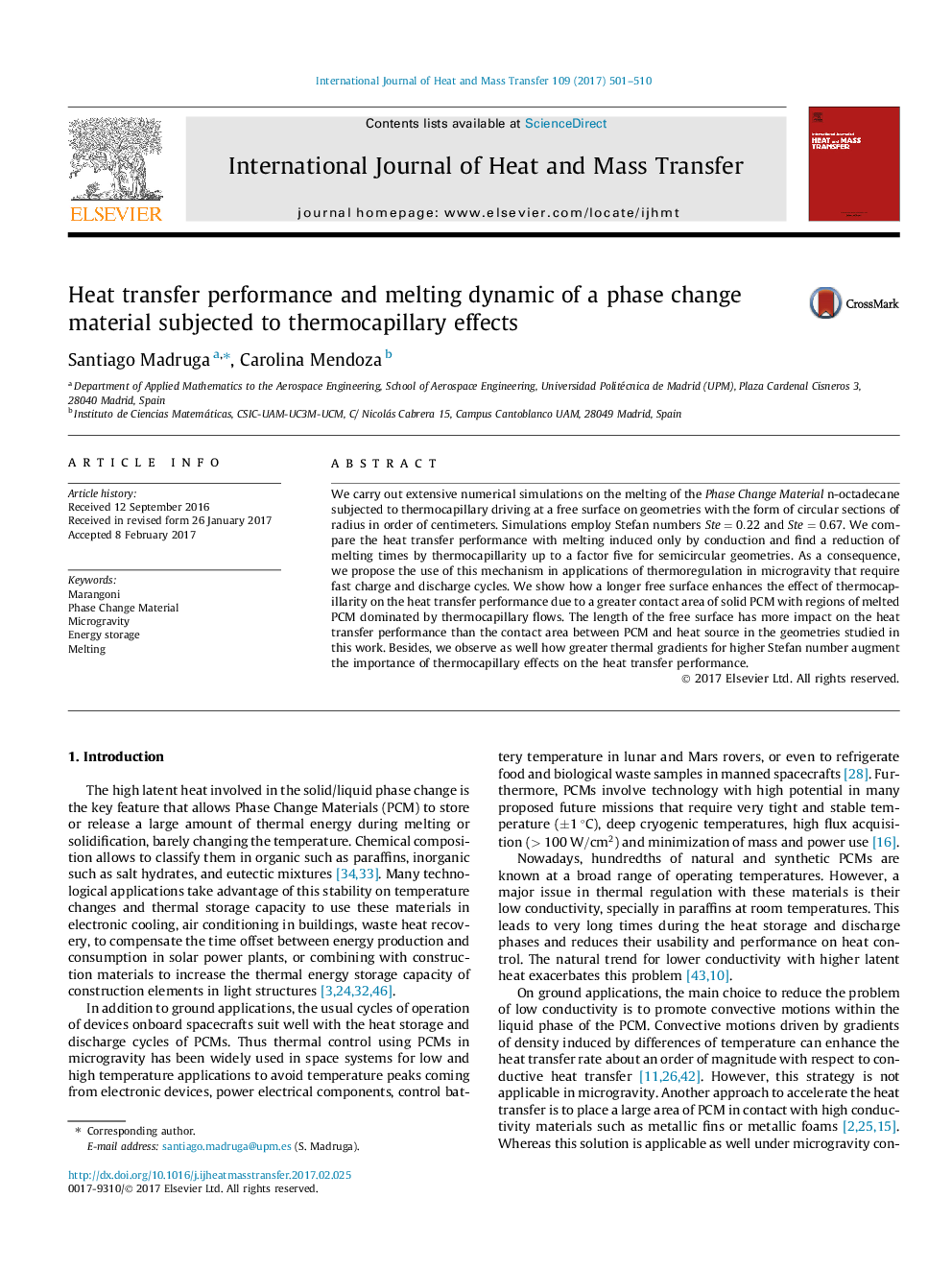| Article ID | Journal | Published Year | Pages | File Type |
|---|---|---|---|---|
| 4994505 | International Journal of Heat and Mass Transfer | 2017 | 10 Pages |
Abstract
We carry out extensive numerical simulations on the melting of the Phase Change Material n-octadecane subjected to thermocapillary driving at a free surface on geometries with the form of circular sections of radius in order of centimeters. Simulations employ Stefan numbers Ste=0.22 and Ste=0.67. We compare the heat transfer performance with melting induced only by conduction and find a reduction of melting times by thermocapillarity up to a factor five for semicircular geometries. As a consequence, we propose the use of this mechanism in applications of thermoregulation in microgravity that require fast charge and discharge cycles. We show how a longer free surface enhances the effect of thermocapillarity on the heat transfer performance due to a greater contact area of solid PCM with regions of melted PCM dominated by thermocapillary flows. The length of the free surface has more impact on the heat transfer performance than the contact area between PCM and heat source in the geometries studied in this work. Besides, we observe as well how greater thermal gradients for higher Stefan number augment the importance of thermocapillary effects on the heat transfer performance.
Related Topics
Physical Sciences and Engineering
Chemical Engineering
Fluid Flow and Transfer Processes
Authors
Santiago Madruga, Carolina Mendoza,
